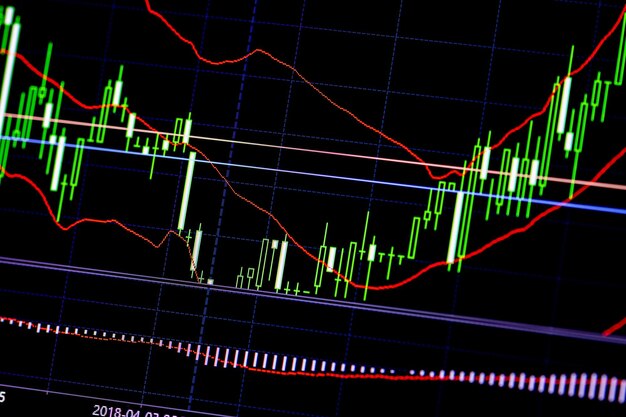Understanding Stock Volume: A Comprehensive Guide for Investors
In the intricate world of stock trading, volume emerges as a pivotal yet frequently misunderstood concept. Whether you're a seasoned trader or just dipping your toes into the investment waters, grasping the essence of stock volume can elevate your trading strategies and bring clarity to market movements. But what exactly is stock volume, and why does it matter so much?
📈 What Is Stock Volume?
At its core, stock volume refers to the number of shares traded in a particular stock or market within a given period, often expressed in a day. It's a critical indicator because it reflects the activity level or liquidity of a stock. High volume generally signals high interest in a stock, while low volume may indicate the opposite.
Imagine stock volume as the pulse of the market. A robust heartbeat suggests vibrancy and activity, whereas a weak one indicates dormancy.
The Importance of Stock Volume in Trading
Volume plays a significant role in trading for several reasons:
Market Sentiment: Volume often converges with price movements to indicate the strength of a trend. A price rise or fall with high volume can suggest strong market sentiment backing the move.
Liquidity: High volume ensures that a stock can be traded easily without causing significant price swings, minimizing the market impact of trades.
Volatility Insights: Understanding volume helps in gauging the volatility of a stock. Spikes in volume can often precede or coincide with shifts in volatility.
Trading Strategies: Many traders use volume data to confirm the validity of price trends and patterns. A breakout with significant volume, for instance, can signal the beginning of a new trend.
Confirmation Tool: Volume is often used to confirm breakout patterns or trends. A price breakout supported by high volume is more likely to be sustainable.
📊 How to Interpret Stock Volume
Grasping stock volume isn't just about understanding numbers; it involves recognizing the story these numbers tell about market dynamics.
Volume and Price Trends
Understanding the relationship between volume and price trends is crucial:
- Price Up, Volume Up: This indicates a strong bullish trend, with more traders buying into the stock.
- Price Up, Volume Down: A warning that the upward trend might be weakening.
- Price Down, Volume Up: Suggests a bearish trend, as more sellers are active.
- Price Down, Volume Down: Indicates a lack of interest, possibly signifying the end of a downtrend.
Volume Spikes
Volume spikes, where there's a sudden and dramatic change in volume, can be indicative of:
- News or Announcements: Key developments can cause sudden spikes in volume as traders react.
- Market Movements: Paired with significant price changes, they often signal a potential reversal in trend.
The Role of Average Volume
The average volume of a stock provides a baseline for understanding typical trading activity and making it easier to spot anomalies or trends. It helps traders distinguish between normal and exceptional market activity.
🧩 Tools and Indicators for Analyzing Volume
Several technical indicators incorporate volume data, helping traders analyze and predict market behavior.
On-Balance Volume (OBV)
OBV is a simple yet effective indicator that uses volume flow to predict price changes. It combines both price and volume, offering a cumulative total that can highlight the strength of a price move.
The Volume Moving Average
By plotting a moving average of volume, traders can smooth out volume fluctuations and better identify patterns or trends in the data.
Volume Weighted Average Price (VWAP)
VWAP is used intraday, giving traders a trading benchmark that sums up the average trading volume and price, aiding in making informed decisions about entry or exit points.
🧐 Practical Applications of Volume in Trading
When used wisely, volume can be a powerful ally in the trading toolkit. Here are a few ways investors and traders can leverage volume:
Entry and Exit Points: Higher volume often validates price movements. Traders may use this to time entry and exit points in their strategies.
Identifying Breakouts: Volume can help confirm the strength and sustainability of a trend during significant breakouts.
Detecting Fakeouts: Low volume on a breakout might signal a false move, helping traders to avoid being trapped.
🤖 Challenges and Limitations
While volume is a valuable tool, it’s not without its limitations. Here are some considerations:
Misinterpretations: Heavy reliance on volume without considering other market factors can lead to misinterpretations.
Data Accuracy: The reliability of volume data can vary based on the source, market conditions, and even times of the day.
Market Anomalies: Sudden spikes in volume can be caused by anomalies that do not necessarily reflect broader trends.
📋 Quick Reference: Key Takeaways on Stock Volume
Here's a handy summary of critical points about stock volume:
- Definition: Volume is the count of shares traded within a set period.
- Significance: High volume can indicate robust market interest or liquidity.
- Tools: Indicators like OBV and VWAP help interpret volume data.
- Strategic Use: Volume aids in validating trends and timing trades.
🚀 Steps to Incorporate Volume Into Your Trading Strategy
Set a Baseline: Understand the average volume for your stocks of interest to better spot irregular activity.
Use Volume in Conjunction With Price: Always consider volume in the context of price movements to confirm trends.
Monitor Trends: Watch for discrepancies between volume and price to anticipate potential reversals or continuations.
Employ Technical Indicators: Utilize tools like OBV or VWAP for enriched analysis.
Stay Informed: Continually update your knowledge with market news and insights that can affect stock volume.
Volume isn't just a number; it's a nuanced narrative within the investment world. By fully understanding and strategically leveraging volume, traders and investors can gain a more refined perspective on market dynamics and make more informed decisions. So next time you look at a stock quote, remember the story behind the volume—it just might be the key to your next successful trade.
